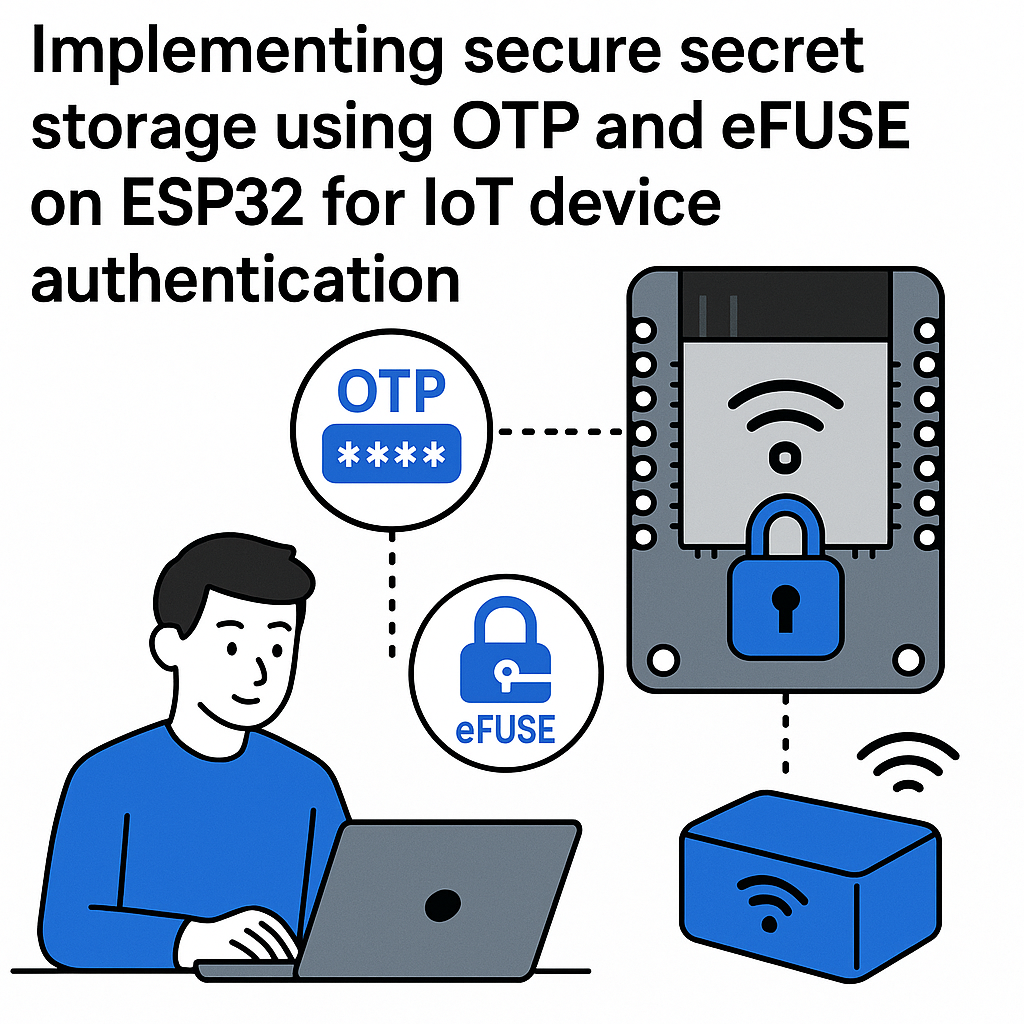Introduction
In the era of IoT, securing device authentication is paramount. This tutorial will guide you through implementing secure secret storage using One-Time Passwords (OTP) and eFUSE on the ESP32 microcontroller. By the end of this tutorial, you’ll have a solid foundation for creating a secure authentication mechanism for your IoT devices.
Prerequisites
- Basic knowledge of embedded systems and microcontrollers
- Familiarity with the ESP32 platform
- Arduino IDE or ESP-IDF set up on your computer
- USB cable for connecting the ESP32 to your computer
Parts/Tools
- ESP32 Development Board
- USB Cable
- Arduino IDE or ESP-IDF
- OTP generation library (e.g., OATH Toolkit)
- eFUSE programming tool (provided by ESP32 SDK)
Steps
- Setup the Environment
- Install the Arduino IDE or ESP-IDF.
- Install the necessary libraries for OTP generation.
// Example for Arduino IDE #include - Connect your ESP32 board to the computer using the USB cable.
- Select the correct board and port in the IDE settings.
- Open the ESP32 eFUSE programming tool.
- Program the eFUSE to enable secure storage:
// Example command to set eFUSE
efuse.write(0x01, 0x01); // Enable secure storage
- Create a function to generate OTP:
String generateOTP() {
// Logic to generate OTP
return otp;
}
efuse.write(0x02, otp); // Store generated OTP
- Implement a function to validate the OTP entered by the user:
bool validateOTP(String userInput) {
String storedOTP = efuse.read(0x02); // Read stored OTP
return userInput == storedOTP;
}
Troubleshooting
- Issue: eFUSE Not Programming
Ensure you have the correct permissions and that the ESP32 is in the proper mode for programming.
- Issue: OTP Generation Fails
Check the OTP library import and ensure it’s correctly initialized.
- Issue: Authentication Fails
Verify that the OTP entered matches the stored OTP and that the read/write operations are functioning correctly.
Conclusion
By following this tutorial, you have successfully implemented secure secret storage using OTP and eFUSE on the ESP32 for IoT device authentication. This approach enhances the security of your IoT solutions, ensuring that only authenticated devices can access sensitive information. Continue to explore additional security measures and best practices to further protect your devices.



